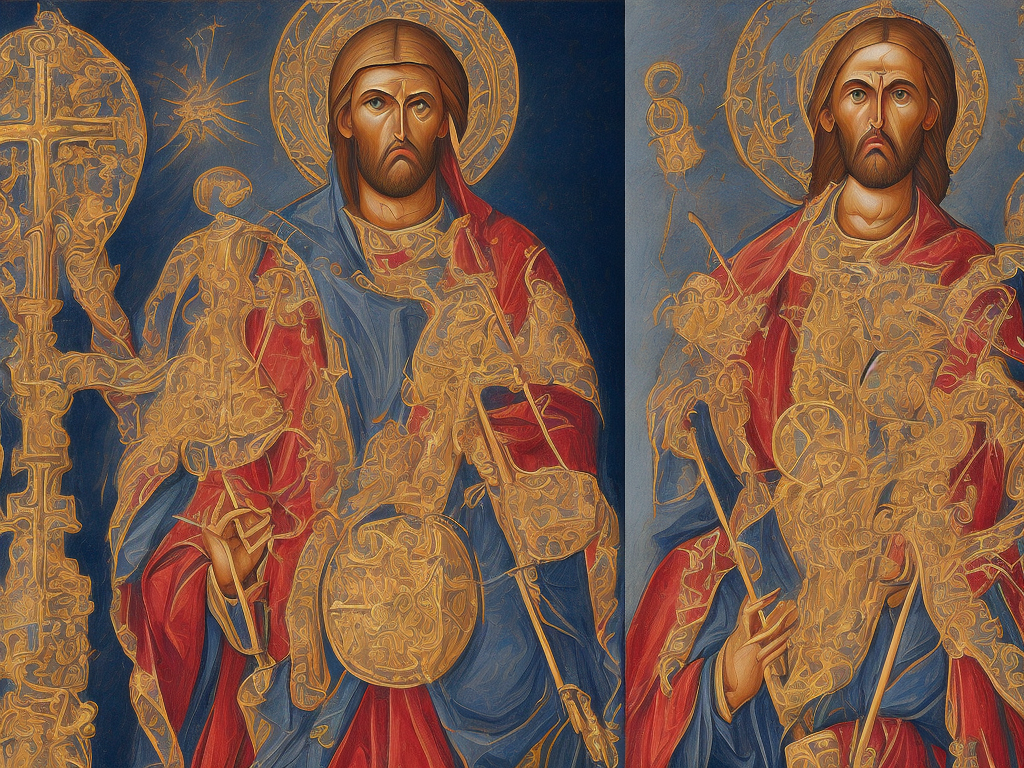
The Catholic Church and the Eastern Orthodox Church, also known as the Orthodox Church, are two major branches of Christianity that have a long history and a rich tradition. Despite sharing common roots and similar beliefs, there are significant differences between these two branches that have led to their separation and distinct practices.
One of the main differences between Catholicism and Eastern Orthodoxy lies in their respective ecclesiastical structures. In the Catholic Church, the Pope, who is considered the successor of Saint Peter, holds the highest authority and is regarded as the infallible leader of the entire Church. This centralized structure allows the Pope to make definitive pronouncements on matters of faith, commonly referred to as papal infallibility.
On the other hand, the Orthodox Church does not have a central authority figure like the Pope. Instead, it is organized into a number of autocephalous, or self-governing, churches, with each church headed by a patriarch or metropolitan. These leaders are equal in authority and do not possess the infallibility attributed to the Pope in Catholicism. Decisions in the Orthodox Church are typically made through consensus among the bishops, who meet in councils known as synods.
The issue of papal authority and the filioque controversy is another major source of difference between Catholicism and Eastern Orthodoxy. The Filioque, meaning “and the Son” in Latin, was a phrase added to the Nicene Creed by the Western Church in the 6th century, stating that the Holy Spirit proceeds from the Father and the Son. This addition created theological disagreement between the Catholic Church and the Eastern Orthodox Church, as the Eastern Orthodox believe that the Holy Spirit proceeds from the Father alone. This difference in understanding has contributed to the division between the two branches, with Eastern Orthodox churches viewing the inclusion of the filioque as an unauthorized alteration of the creed.
In terms of liturgical practices, the Catholic Church and the Orthodox Church also differ significantly. Catholic services are conducted in Latin, the traditional language of the Roman Empire, whereas the Orthodox Church predominantly uses local languages in their worship services. The liturgy, or the order of worship, also varies between the two branches. Roman Catholic liturgy, known as the Roman Rite, emphasizes uniformity and adherence to a set structure, while Eastern Orthodox liturgy has more variability and is often celebrated in a more ornate and mystical manner.
Another point of difference is the role of icons in worship. The use of religious icons is deeply rooted in the Eastern Orthodox tradition, with icons playing a significant role in Orthodox worship and spirituality. The veneration of icons, seen as windows into the divine and aids to prayer, is a distinctive characteristic of the Orthodox Church. Icons are often displayed throughout Orthodox churches, and believers may kiss or touch them as an act of reverence.
In contrast, the Catholic Church also recognizes the use of icons, but their role is not as central or prominent as in the Orthodox Church. Catholicism places a greater emphasis on statues and three-dimensional representations of saints and religious figures. While both branches acknowledge the importance of visual representations in aiding devotion and connecting with the divine, the specific use and significance of icons differ between the two.
The issue of celibacy is another area where Catholicism and Eastern Orthodoxy diverge. In the Catholic Church, priests are required to be celibate, meaning they must abstain from marriage and sexual relations. This practice is seen as a way for priests to fully devote themselves to their religious duties. In contrast, the Orthodox Church allows married men to become priests, with the expectation that they would have been married before being ordained. This difference in the requirement of celibacy reflects the varying practices and priorities within each branch.
Furthermore, the Catholic Church and the Orthodox Church have distinct approaches to the interpretation and understanding of original sin. Catholicism teaches that original sin is transmitted from Adam and Eve to all humanity, resulting in the need for baptism to remove the stain of this sin. In contrast, Eastern Orthodoxy views original sin as a spiritual illness that affects humanity but does not inherit guilt. The Orthodox Church emphasizes the restoration of communion with God through the process of theosis, or divinization, where individuals strive to become united with God's divine energies.
Despite these differences, it is important to note the commonalities between Catholicism and Eastern Orthodoxy. Both branches recognize the importance of sacraments, such as baptism and the Eucharist, as central elements of Christian worship. They also share a devotion to Mary, the mother of Jesus, and acknowledge the role of saints in interceding on behalf of the faithful. Additionally, both the Catholic Church and the Orthodox Church uphold the belief in the Trinity and the authority of Scripture.
In conclusion, while the Catholic Church and the Eastern Orthodox Church share a common history and many fundamental beliefs, there are significant differences that have led to their separation and distinct practices. These differences include ecclesiastical structures, papal authority, liturgy, the veneration of icons, celibacy, and the understanding of original sin. Despite these divergences, both branches continue to play significant roles within Christianity and serve as sources of spiritual guidance for their respective communities.
 Self-Instruct
Self-Instruct